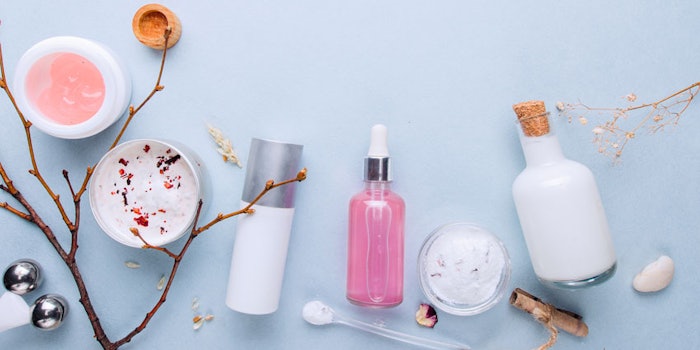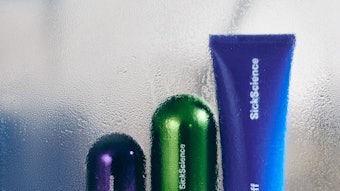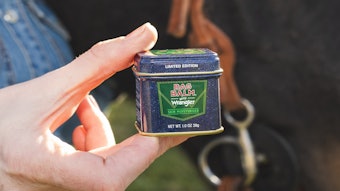
Making sustainable synthetics that are topically harmless can create safer products while reducing industry’s impacts on the environment. While this solution is not perfect, in my estimation, it would represent a significant and effective step in the right direction. But how do we get there?
Fixing Our Broken Industry Vocabulary
To begin this process, I have a proposal: Instead of using the word “natural” when it comes to cosmetic ingredients, let’s, as an industry, define and use the term “more sustainable.”
“There is no legal definition of natural” is often said, but completely incorrect. In fact, the term “naturally occurring substances” is already defined under in the U.S. Environmental Protection Agency (EPA) regulations and in EU law in almost identical termsa:
“A naturally occurring substance is any chemical substance that is naturally occurring, and which is: (1) unprocessed; (2) processed only by manual, mechanical, or gravitational means; by dissolution in water; by flotation; or by heating solely to remove water; or (3) extracted from air by any means.”
The U.S. law makes explicit that these substances must come from plants, mining or the atmosphere and that the processing must not change the basic molecular structure of the substance. While the EPA definition includes petroleum because it comprises ancient algae and zooplankton, we will largely exclude it from this proposal in consideration of the preferences of “natural” consumers.
What the Consumer Really Means by “Natural”
The way the terms “natural/organic”—and, conversely, “synthetic” or “chemical”— are used in the consumer sphere makes it obvious that the public conflates “natural/organic” with “safety.” Consumers, particularly digital natives, have developed deep suspicions about what they perceive to be “chemicalsb.” Regardless of the more nuanced reality of cosmetic ingredients, it cannot be denied that the consumer wants what the consumer wants.
Brands Aren’t Ready to Address “Natural”
This digital buyer has become the driving force for a whole generation of products that appear to be causing even the mega brand owners to invest in and/or develop their own “natural” brands. Unfortunately, when you question investment firms, R&D folks and brand owners in these projects about how they define “natural,” they really can’t provide an answer without a bit of a stutter.
The Proposed Solution
There are (at least) a few truths we need to address to solve the terminology disconnect.
- Natural and synthetic chemicals are needed for product functionality
- Consumers need to trust the products and the chemicals they see on their labels.
- The entire beauty and personal care industry needs to share and repeat a consistent message to its consumers to avoid confusion and distrust
My proposed solution focuses on swapping in the terms “sustainability” and “transparency” in lieu of “natural.” Under this definition, sustainability is defined by producing and/or applying environmentally and topically safe chemicals using only naturally occurring substances. This would exclude most petroleum chemicals, except a few processing chemicals typically exempted under organic and natural standards, including pure sulfur and hydrogen, which are by-products of petroleum processing.
The 12 Principles of Green Chemistry, as defined by originators John Warner and Paul Anastasc in the 1990s, would serve as a guide to how these raw materials can be processed into “safer” chemicals. It should be noted that this approach has been adopted by most of the private organic and natural cosmetic standards, including COSMOS, Natrue, NSF-305 and the Natural Products Association.
If we can transparently explain to consumers the basic concepts noted above, it is possible for formulators to develop and use a functional palette of ingredients in beauty, personal care and household cleaners that meets consumer expectations for “safe” and assures them that they are receiving naturally derived ingredients, all based on existing legal and academic architecture.
The formulation side of the beauty and personal care industry needs a consistent and shared way to discuss formula development with brands that will address rising consumer concerns. Green chemistry that leverages naturally occurring substances appears to be a potentially useful tool for working with today’s market expectations and technical limitations.
Gay Timmons is the founder of Oh, Oh Organic, Inc. Her 40-year career has focused on agricultural products, particularly organic ingredients. Timmons’ experience includes ingredient sales, private label processing for food items and cosmetic materials. She is the current chair of the board of the Natural & Organic Health & Beauty Alliance trade organization.
Footnotes:
a“Scope of the inventory,” 40 CFR 710.4(b)
bEditor’s note: Here, it should be noted that, although the term “chemical” is often used as a colloquial pejorative in reference to synthetic or “problematic” ingredients, all matter in the universe that contains atoms—natural and synthesized—is composed of chemicals. The term “chemical” has no scientific correlation to safety, risk or hazard.
cAnastas, P. T.; Warner, J. C.; “Green Chemistry: Theory and Practice”; Oxford University Press: Oxford, 1998











